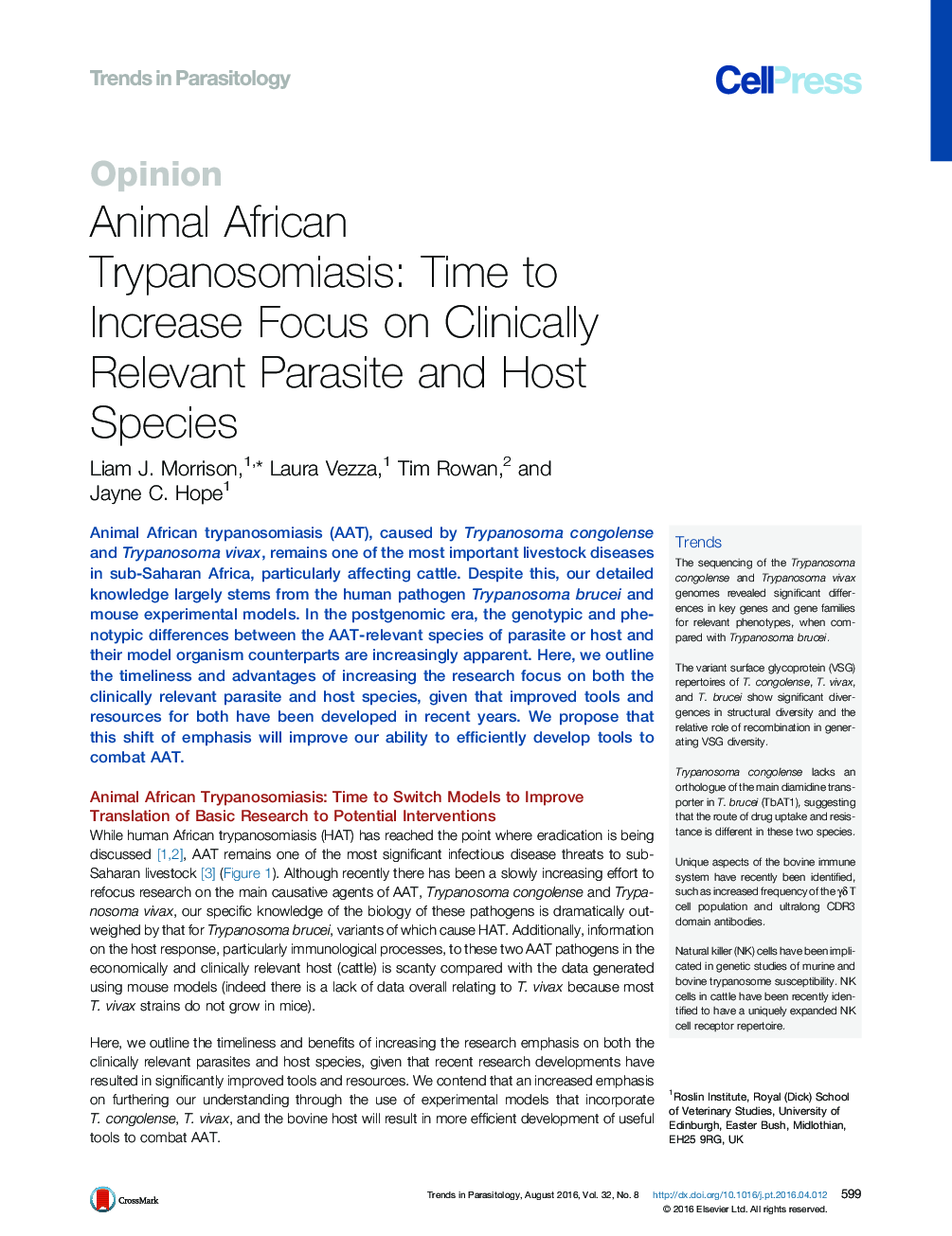| Article ID | Journal | Published Year | Pages | File Type |
|---|---|---|---|---|
| 3422933 | Trends in Parasitology | 2016 | 9 Pages |
Animal African trypanosomiasis (AAT), caused by Trypanosoma congolense and Trypanosoma vivax, remains one of the most important livestock diseases in sub-Saharan Africa, particularly affecting cattle. Despite this, our detailed knowledge largely stems from the human pathogen Trypanosoma brucei and mouse experimental models. In the postgenomic era, the genotypic and phenotypic differences between the AAT-relevant species of parasite or host and their model organism counterparts are increasingly apparent. Here, we outline the timeliness and advantages of increasing the research focus on both the clinically relevant parasite and host species, given that improved tools and resources for both have been developed in recent years. We propose that this shift of emphasis will improve our ability to efficiently develop tools to combat AAT.
TrendsThe sequencing of the Trypanosoma congolense and Trypanosoma vivax genomes revealed significant differences in key genes and gene families for relevant phenotypes, when compared with Trypanosoma brucei.The variant surface glycoprotein (VSG) repertoires of T. congolense, T. vivax, and T. brucei show significant divergences in structural diversity and the relative role of recombination in generating VSG diversity.Trypanosoma congolense lacks an orthologue of the main diamidine transporter in T. brucei (TbAT1), suggesting that the route of drug uptake and resistance is different in these two species.Unique aspects of the bovine immune system have recently been identified, such as increased frequency of the γδ T cell population and ultralong CDR3 domain antibodies.Natural killer (NK) cells have been implicated in genetic studies of murine and bovine trypanosome susceptibility. NK cells in cattle have been recently identified to have a uniquely expanded NK cell receptor repertoire.
